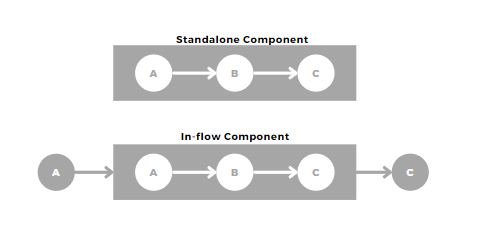Components
What is a component?
Components are ways of packaging sets of regularly used tasks. This encourages modularity and re-use.
This means a library of powerful workflows that are then simple dropping in 2-3 line YAML fragments.
Components can be structured as complete workflows or to slot into larger ones:
- 'In-flow' using previous steps as inputs
- e.g. 'if', 'singer_multiplexer'
- 'Standalone' ones can be built as DAG full templates. The difference is this structure can use the Component Builder UI.
- e.g. 'db_to_snowflake'

@TODO - screenshot of UI
The rest of this page will focus on how to build a Component. See Using Components for examples on how to use existing components.
Component structure
As components are simply packaging a set of tasks they are simply a normal DAG but with some optional concepts:
name:: Descriptive name for the component.args:: Any number of arguements that you need as inputs for teh parameter (e.g. table names, source hooks, target hooks etc.)$COMPONENT_INPUT: (Optional) If you are making a in-flow component, this is assigns that inputoutput: (Optional) If the component results in output to downstream tasks (rather than writing to a target hook) this allows you to assign them.
This example component shows the usage of all the above variables.
name: if
args:
condition: Callable[[T], bool]
data: T
tasks:
then:
input: $COMPONENT_INPUT
function: typhoon.flow_control.filter
args:
filter_func: !Py $ARG.condition
data: !Py $ARG.data
else:
input: $COMPONENT_INPUT
function: typhoon.flow_control.filter
args:
filter_func: !Py "lambda x: not $ARG.condition(x)"
data: !Py $ARG.data
output:
- then
- else